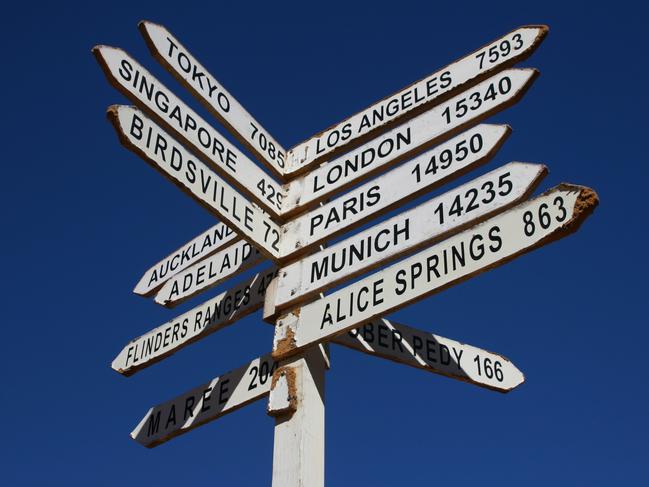Extreme Medics — Part Six: Overcoming the isolation and heat to save lives in two of Australia’s toughest towns
The woman was lying the middle of the road, her skin blistering from the searing bitumen when they arrived. She was just one of several people the Intensive Care Paramedics were called to help that day. Others were simply lonely. EXTREME MEDICS SPECIAL REPORT: PART 6

NSW
Don't miss out on the headlines from NSW. Followed categories will be added to My News.
- Part One: Australia’s most courageous first-responders
- Part Two: Behind the scenes of a paramedic rescue
- Part Three: Extreme Medics make life or death decisions
An ordinary paramedic shift in the Red Centre often involves “a run of things” such as the Critical Response Unit responding to four trauma cases back to back, including a fatal hit-and-run and a suicide in the centre of town.
But on this day, between these two serious cases, their calls were fairly routine.
There were elderly patients who lived in care homes, those living with chronic illness and those with minor complaints who were really just lonely at Christmas time.

In another incident though, a motorist called triple-0 about a person lying unconscious near the road.
The CRU arrived to find an intoxicated woman having a seizure in the sizzling midday sun, her skin literally blistering from the scorching bitumen.
She was just one of several of patients suffering seizures or sickness related to alcohol consumption, the 40C Central Australian heat, missed renal dialysis appointments for kidney treatments or a combination of all of the above.
There was another call to the renal clinic, where every bed was filled as patients had their blood filtered through big whirring machines at their bedsides for hours on end.

Alice Springs is the home to the biggest renal unit in the Southern Hemisphere with more than 250 residents requiring renal dialysis.
“We’ve got patients with complex medical conditions, which can be very hard for them to manage themselves within their culture and the environment here,” said Paul.
“As an emergency medical service we get exposed to a huge number of patients who have missed dialysis appointments.”
- Part Four: Ambulance rescue like something from a TV drama
- Part Five: How Extreme Medics prepare to save lives

A majority of sufferers have dialysis up to three times each week and missing even one treatment can be fatal.
“Dealing with those cases is almost a daily event and sometimes multiple times through the day,” he added.

THE HEROES
Meet dedicated Alice Springs paramedic Caitlin Little
Meet dedicated Alice Springs paramedic Paul Reeves
The majority of the patients the crew attend are aboriginal.
“We could get dispatched to cardiac arrest which is one alpha and the patient could be asleep, drunk or something else,” Caitlin said.
“If alcohol is not a factor in the person calling, language limitations can be very difficult when they are being bombarded with questions like ‘what’s the patient doing?’ in order to formulate how bad things are.
“Sometimes they just say ‘this is where we are’ and hang up and we’re getting dispatched to we don’t know what.”

Another challenge is the geographical isolation. The crews in Alice Springs automatically dispatch to 150km radius and, with authorisation, deeper into the Simpson Desert.
“If we have to send a crew out of town quite quickly we can lose a third of our resource or half of our emergency paramedic patient carrying capacity for the next three hours,” Paul said.
“It’s really quite exceptional as far as a remote, hostile and challenging environment.”
They constantly feel the strain working in a “resource-limited environment”.

“As comfortable as Alice Springs can be in comparison to the smaller Tennant Creek, we’re still a long way from anywhere and that’s very much the culture, attitude and awareness of people who live in Central Australia,” Paul said.
“We live relatively normal lives in comfort but most people, at some point, get exposed to how remote we actually are here. It’s 1500km to the nearest coast and large city.”
These are the untold stories of courage, compassion, dedication, resilience and inspiration of a caring group of remarkable and selfless first-responders in two of the toughest towns in Australia.


